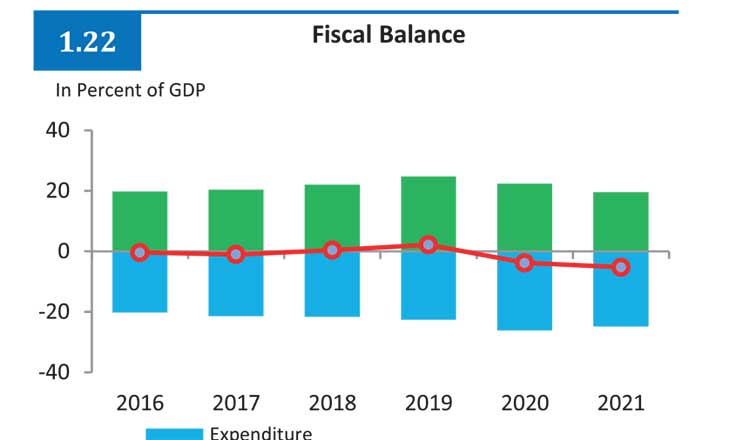Cambodian government fiscal deficit rises to 5.3% despite fall in expenditure
The fiscal deficit of the Cambodian government widened to 5.3 percent of the Gross Domestic Product (GDP) in 2021, compared to 3.8 percent in 2020, mainly due to a fall in revenue collection, said the Fiscal Stability Report, released by the National Bank of Cambodia recently.
The fiscal deficit prompted a drawdown of fiscal reserves and increased the government’s debt.
The revenue collection decreased mainly as a result of slow economic recovery following the Covid-19 pandemic and tax relief measures provided by the government. The government’s revenue equalled 20.8 trillion riels in 2021, a decline of 10.2 percent, compared to the previous year, though this is a slight improvement compared to 2020 when it declined by 15.1 percent.
The primary reason for the decline in revenue collection was a fall in tax collection by 4.2 percent, in which the taxes on goods and services dropped by 9.6 percent and taxes on international trade and transactions by three percent.

However, tax on income, profit and capital gains increased by 2.6 percent. But grants that represented five percent of the total revenue decreased by 49 percent.
Interestingly, despite the Covid-19 economic stimulus packages the government expenditure declined 2.6 percent in 2021 compared to the previous year and stood at 26.4 trillion riels.
The success in controlling the government expenditure was mainly due to the efforts to rationalize its current spending, especially wages which showed a decline of 10.9 percent and in the use of goods and services, a decline of 26.3 percent.
At the same time, both capital expenditure and social benefits decreased by 6.7 percent. It should be noted that in 2020 and 2021 the government rolled out 10 rounds of intervention measures and spent a whopping $2.3 billion to assist nearly two million poor and vulnerable households hit hard by Covid-19, apart from supporting the businesses strongly affected by the pandemic.
Despite increasing pressure on government financing, the risk of government debt distress was low. By the end of 2021, the government debt increased by 7.7 percent to $9.49 billion, which accounted for 36.4 percent of the GDP. China was the largest creditor, sharing 42.7 percent of the government debt, followed by multilateral loans (30.4 percent), Japan (9.2 percent) and Korea (5.3 percent).
According to the debt sustainability analysis of the Ministry of Economy and Finance (MEF), Cambodia’s public debt remained at low risk. The present value of the public and publicly guaranteed debt in the GDP was 24.4 percent, much lower than the 40 percent threshold.
When contacted, Royal Academy of Cambodia economics researcher Ky Sereyvath told Khmer Times that the fiscal deficit was not that alarming for the country. “The economic stabilization policy of the government to manage the Covid-19 crisis led to the widening fiscal deficit. Otherwise, even the current budget would only have been a surplus one,” he said.
Source: https://www.khmertimeskh.com/501100135/fiscal-deficit-rises-to-5-3-despite-fall-in-expenditure/


 Thailand
Thailand




